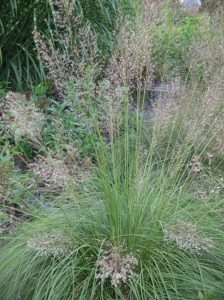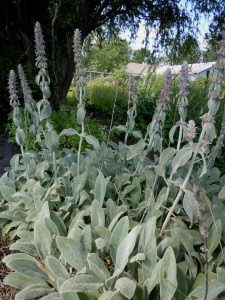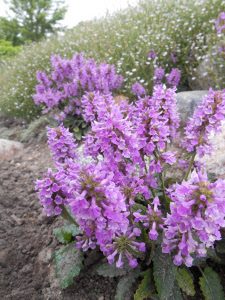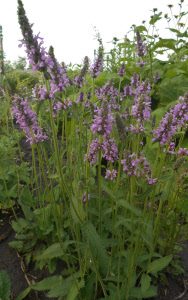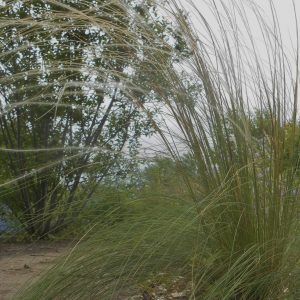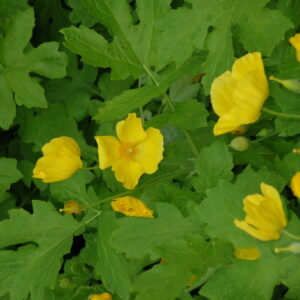Shop
Showing 697–704 of 778 results
-
Sporobolus heterolepsis Prairie dropseed Zone 3 – 9
Mound of graceful thinnest of grass blades
The description in the Chiltern Seeds catalog cannot be improved: “This is the most elegant and refined of the North American prairie grasses …the finest texture composed of the thinnest of thin, thread-like, glossy green blades,.. in autumn turning deep orange before fading to a light copper for the winter. In late summer the plants bear, on very slender stalks high above the foliage, unbelievably delicate, graceful flower panicles, excellent for cutting. ”One of internationally known garden designer Piet Oudolf’s 100 “MUST HAVE” plants, Gardens Illustrated 94 (2013)
Size: 2’ x 2’
Care: Full sun in well-drained soil
Native: from Canada in the north to Texas in the south, Wisconsin native
Wildlife Value: seeds are food for birds
Awards: Missouri Botanic Garden Plant of Merit & Great Plants for Great Plains Grass of the Year.Sporobolos is Greek from sporo meaning seed and ballein meaning to cast forth because the seed readily falls from the flower (or dropseed, the common name). Ojibwa “Medicine Society” used roots to cure sores & “remove bile.”
-
Stachys byzantina Lamb’s ears, Woolly betony, Wooly woundwort Z 4-8
Pale pink-lavender flowers on silver-gray spikes in summer with foliage as soft as a lamb’s ear.
Pale pink-lavender flowers on silver-gray spikes in summer with foliage as soft as a lamb’s ear.
Size: 12 x 12 spreading
Care: Full sun in moist well-drained to well-drained soil, low fertility
Native: Iran
Wildlife Value: Drought tolerant & deer resistant.Stachys is an old greek word meaning, “spike.” Stachys was believed to cure almost everything. Italians urged people to: “sell your coat and buy betony.” The common name “woundwort” describes the leaves’ function as bandages. Cultivated by George Washington at Mount Vernon.
-
Stachys minima syn. Stachys spathulata Dwarf betony Z 5-9
Atop a mound of spatula-shaped, crinkled leaves with scalloped edges rises a bounty of 4 to 5 inch tall spikes, each crowned with a hoard of tiny fuchsia-colored trumpets blowing their horns “look at me” in early to mid-summer.
OUT OF STOCK
Atop a mound of spatula-shaped, crinkled leaves with scalloped edges rises a bounty of 4 to 5 inch tall spikes, each crowned with a hoard of tiny fuchsia-colored trumpets blowing their horns “look at me” in early to mid-summer.
Size: 4-8" x 8-12" spreading slowly by rhizomes
Care: sun to part shade in moist well-drained soil
Native: South Africa
Wildlife Value: Deer resistant. Attracts small bees and butterfliesEnglish adventurer and naturalist William John Burchell (1781-1863) scoured South Africa from 1803 to 1815 collecting more than 50,000 specimens packed in 48 crates. In places unexplored he found insects, animals, fish and unknown plants, this being one. Although he published two volumes of his exploration, he did not finish the last, third volume, leaving another to write the botany. Premier English botanist George Bentham (1800-1884) took up the task authoring Labiatarum Genera et Species, published in 1834. He wrote the first published description and named this tiny plant with outsized charm.
-
Stachys officinalis syn. Betonica officinalis syn. Stachys betonica Bishop’s wort, Betony Z 4-8
Showy reddish-purple spikes of two-lipped tubes in May and June
Showy reddish-purple spikes of two-lipped tubes in May and June
Size: 18-24” x 12-18” slowly spreading
Care: sun in moist well-drained soil
Native: Europe and Asia
Wildlife Value: deer & walnut tolerant, attracts hummingbirdsOnce one of the most honored herbal medicines. Medicines were good if they had “as many virtues as Betony.” John Sauer, Colonial herbalist claimed “there is no illness brought on by cold in which Betony cannot be administered effectively.”
-
Stipa tirsa Horsetail feather grass Z 5-8
Thinnest of thin, white-silver panicles from thin green leaves June-July
ARCHIVED
Note: This is a plant not currently for sale. This is an archive page preserved for informational use.
Thinnest of thin, white-silver panicles from thin green leaves June-July
Size: 18-24” x 14-20”
Care: sun in well-drained soil
Native: Europe, Siberia, Russia and Caucasus1st described in Bulletin de la Société Impériale des Naturalistes de Moscou 30(2): 115. 1857.
-
Stylophorum diphyllum Celandine poppy Z 4-9
Sunny yellow cups bloom in late spring, reblooming sporadically, atop this 12-18" tall native.
OUT OF STOCK
Sunny yellow cups bloom in late spring, reblooming sporadically, atop this 12-18″ tall native.
Size: 12-18" x 12"
Care: Part shade, but tolerates sun, in moist to moist well-drained soil
Native: PA west to WI, south to MO & AK. Wisconsin native.1st collected by French plant hunter extraodinaire André Michaux, who spent 11 years in North America. (1746-1802) William Robinson, father of the mixed perennial border, described this as “a handsome Poppywort … (with) large bright yellow flowers freely produced in early summer.” Self-seeds and likely you’ll be happy for it.
-
Succisa pratensis Devil’s bit scabiosus Z 5- 9
A tall, thin stem, unbranched until its upper quarter, then branching, each branch topped with its own flower head. Innumerable tiny flowers surround a global, lake-blue flower head, about the size of a ping-pong ball. Thread-like stamens poke out from the flowers all around the globe – blue too. Blooms for nearly three months mid-to-late summer into fall.
OUT OF STOCK
A tall, thin stem, unbranched until its upper quarter, then branching, each branch topped with its own flower head. Innumerable tiny flowers surround a global, lake-blue flower head, about the size of a ping-pong ball. Thread-like stamens poke out from the flowers all around the globe – blue too. Blooms for nearly three months mid-to-late summer into fall.
LIMITED QUANTITIES AVAILABLE, LIMIT OF 1 PER CUSTOMER PLEASE
Size: 2-4’ x 12”
Care: sun to part shade in moist to moist-well drained soil
Native: Europe to central Siberia, NW Africa
Wildlife Value: provides nectar and pollen to butterflies, moths, and beesHistorically this has made a dye, a tea, and seasoned food. It treated numerous medical conditions including scabies, eczema, fevers, wounds, syphilis and plague. Devil’s bit named for the legend that the Devil disapproved of the plant uses and attempted to destroy it by biting off its roots. First described by Swiss botanist Gaspard Bauhin in 1623, Pinax theatri botanici, with a different name. Linnaeus renamed it in Hortus Cliffortanus, 1737and then Möench renamed it to Succisa pratensis in 1794.
-
Symphoricarpos albus Snowberry Z 3-7
Small pink bell-shaped flowers turn into copious clusters of round, white berries, like miniature snowballs, grace this shrub from late summer through winter.
OUT OF STOCK
Small pink bell-shaped flowers turn into copious clusters of round, white berries, like miniature snowballs, grace this shrub from late summer through winter.
Size: 3-6’ x 3-6’
Care: sun to part shade in moist well-drained to well-drained soil
Native: Canada east to west coasts; US all states north from Virginia to California. Wisconsin native.
Wildlife Value: deer tolerant, attracts numerous birds including Hummingbirds, Towhees, Grouses, Robins, and Waxwings for nesting and food, although the fruit is poison to humans. Bees flock to the flowers’ pollen. Host for caterpillars of the Snowberry Sphinx moth and Snowberry Clearwing moth.Pauites of Oregon constructed cradle boards with the wood, sharpened the stem for digging tool and used its branches in a game of dice. The Nez Perce boiled sticks in water then used to remedy fevers, and encircled its branches around cradleboards to protect babies from ghosts. Flathead cured injured eyes with juice for the fruit and made a paste of its fruit, bark and leaves to remedy skin ailments and burns. For the Blackfoot the smoke from burning twigs blackened newly made pipes. Sioux made a diauretic from the fruit. Ojibwa speeded up convalescence for new mothers after giving birth with water infused with this. Shoshone made arrows from shoots for small birds. Collected for botany before 1753. Also collected on Lewis and Clark Expedition along the Missouri River west of Council Bluffs.
**LISTED AS OUT OF STOCK BECAUSE WE DO NOT SHIP THIS ITEM. IT IS AVAILABLE FOR PURCHASE AT OUR RETAIL LOCATION.

